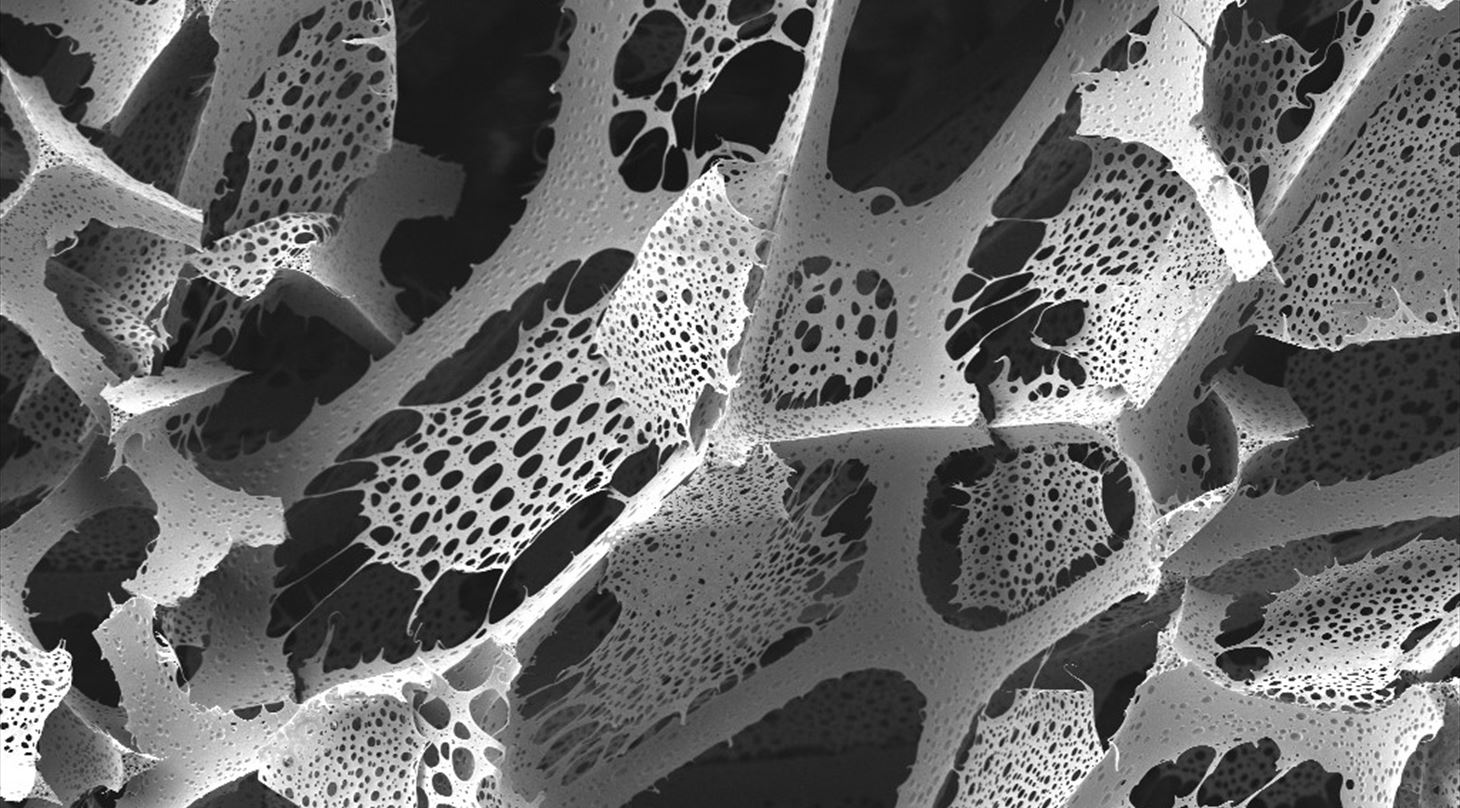
Understanding Porosity at Danish Technological Institute
Porosity plays a critical role in the performance of various materials, influencing factors such as pill dissolution, fluid absorption, drug availability, and shelf life.
At the Danish Technological Institute, we are dedicated to leveraging advanced techniques to deeply understand porosity within medico materials, food, energy materials and more.
Explore Our Advanced Techniques:
- Micro-CT Scanning: We employ micro-CT technology to achieve detailed 3D visualizations of materials down to a resolution of 1 micrometer. Our facility is equipped with both in-house instruments and access to larger facilities for enhanced contrast and signal strength. For instance, some of our high-resolution MicroCT data are acquired at the European Synchrotron Radiation Facility (ESRF).
- Quantifying Porosity: Our experts specialize in modeling micro-CT data to quantify porosity. We utilize ball fitting techniques, whether analyzing data obtained in-house or from large-scale facilities.
- Scanning Electron Microscopy (SEM): For 2D visualizations, we turn to Scanning Electron Microscopy, which allows us to delve into the nano-scale. SEM provides a closer look at the surface and structural details of materials, enhancing our understanding of their microscopic properties.
- Mercury Intrusion Porosimetry: Mercury Intrusion is another rapid technique we use to determine the porosity of materials ranging from the nano to micrometer scale. This method is crucial for quick and accurate porosity assessments, aiding in the efficient development and testing of products.
Learn More in Our Video
For a more visual representation of how we utilize these technologies, please watch the video below. It offers a glimpse into the state-of-the-art methods and environments we use to study porosity in materials.
At the Danish Technological Institute, our commitment to advanced material analysis helps us lead in the development of products with optimized performance and reliability.